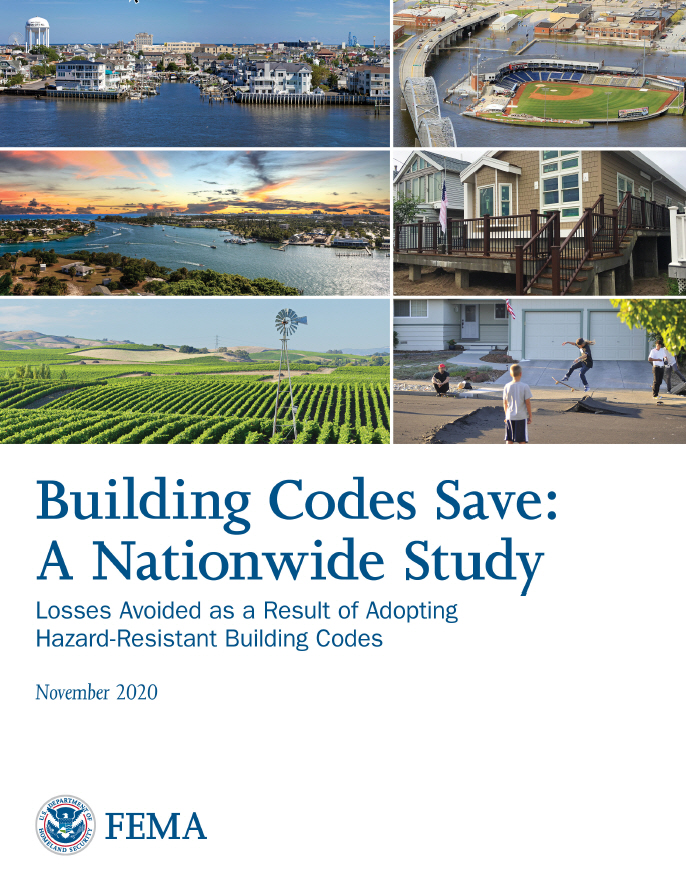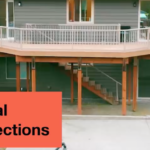What comes to mind when you think of May? May flowers (from April showers)? Horse racing (the Kentucky Derby and Preakness)? Car racing (the Indianapolis 500)? How about some special days, like Mother’s Day, Memorial Day, Teacher Appreciation Day or Armed Forces Day?
Mothers, teachers, and members of the military definitely deserve all the recognition they can get. But what about your safety? There are two month-long observances in May that also deserve some attention: Building Safety Month and Deck Safety Month.
The building industry celebrates each May as Building Safety Month. The International Code Council and its partners want you to think about the buildings in which you reside, work, shop, dine and otherwise live your life. They also want you to think about the people who help ensure those buildings are safe. ICC says, “Building Safety Month is an international campaign that takes place in May to raise awareness about building safety. This campaign reinforces the need for the adoption of modern, regularly-updated building codes, and helps individuals, families and businesses understand what it takes to create safe and sustainable structures.”
Each week of Building Safety Month focuses on a general theme related to building safety. The four weeks’ focus issues are Energy and Innovation, Training the Next Generation, Water Safety and Disaster Preparedness.
Week One: Energy and Innovation
In the first week, the individual themes are Energy Efficiency and Carbon Reduction, Resiliency, Sustainability and Innovation. The Code Council tells us that Americans spend more than $200 billion annually on energy bills, and that buildings and building construction are responsible for over one-third of global energy consumption and nearly 40 percent of CO2 emissions. Development and adoption of building energy codes can reduce energy bills, improve occupant and community health, enhance resilience, and reduce greenhouse emissions. This week also has a focus on sustainability, and the ICC hopes to show how use of the International Green Construction Code can result in more sustainable, resilient, high-performance buildings. Finally, this week focuses on innovation in building construction, and how several ICC subsidiaries are helping accelerate innovation. These include the ICC-ES for certifying innovative building products; IAS accrediting labs; inspection agencies and building departments; and the General Code for helping local governments keep their codes organized.
Week Two: Training the Next Generation
In 2014, the National Institute of Building Sciences found that over 80% of the existing code professional workforce planned to leave the industry by 2029. If you keep up with the construction industry, you’re aware of the shortage of workers there. ICC is trying to help recruit and train new members of the building safety profession through its Safety 2.0 program.
Week Three: Water Safety
This week focuses on water safety in two main subjects — the water we drink, and the water we use for recreation. We all need clean water to drink. I know that after the winter storm here in Texas, I no longer take for granted the clean, drinkable water that flows from my faucet. ICC Building, Plumbing, and Green Codes all help ensure that the water in our buildings will be safe and clean, and that it will be used efficiently. With warm weather approaching, this is a good time to bring the issue of swimming pool and backyard safety to people’s minds. You can find their ten tips for backyard and pool safety here.
Week Four: Disaster Preparedness
Full disclosure: Simpson Strong-Tie is the sponsor for this week of Building Safety Month, so we consider this very important.
ICC has identified four steps that can help homeowners with disaster preparedness: Build to the latest codes, prepare your family, protect your home, and work to increase your community’s resilience. Use of modern building codes is one of the best ways to reduce the effects of disasters on buildings. Recent studies by FEMAand the National Institute of Building Sciences have demonstrated the effectiveness of building codes in reducing losses from natural hazards. Because we are continually learning new ways to prevent damage from natural hazards, it’s important that adopted codes be updated to the newest editions.

The next step in disaster preparedness is to prepare your family. Some of the most important actions to take are to determine your risk; develop a family disaster plan; gather and store important documents in a safe place; develop an evacuation route and find an emergency shelter location, and make sure your family is aware of them; stay aware and take shelter when necessary; and review your plan regularly. Here are ICC’s ten steps for disaster safety and mitigation. In case you didn’t see it, here is our blog post on hurricane preparedness from last year.
The third step is to protect your home. This can include making sure that your home is structurally sound, making sure that the surroundings of your home won’t damage it during a natural disaster, and making sure your insurance coverage is up to date just in case a disaster does occur. See here for our blog post on steps for a safer and more storm-resistant home and here for other homeowner resources for high-wind resistance.

Deck Safety Month
The importance of ensuring structural safety on our property doesn’t stop at our front door, though. As spring warms up and families desire more time outdoors, it’s important for homeowners to be aware that many existing decks are already past their useful life and may not be as safe as they seem. Therefore, it’s appropriate that May is also Deck Safety Month. NADRA, the North American Deck and Railing Association, is spearheading the effort to educate deck owners on how to ensure that their exterior decks are safe. Their three focus words are “Educate, Inspect, Correct”. They’ve developed a 10-point Consumer Checklist to help deck owners evaluate their decks. The group THINK WOOD has also developed a document to help homeowners called Deck Check! Deck Safety Q+A. Of course, Simpson Strong-Tie also has lots of information on deck safety, including 5 Things to Look for on an Existing Deck and our Deck Connection and Fastening Guide. If you’re building a new deck, one of the most helpful documents is the American Wood Council Prescriptive Residential Wood Deck Construction Guide (DCA6).
Prepare Your Peace of Mind
Spring and summer are times when we naturally look to unwind and enjoy a break from all our hard work at work and at school. But it’s easier to enjoy our free time when we know we’ve taken the appropriate precautions. When it comes to structural safety, a modicum of preparation can guarantee months of mental peace.







